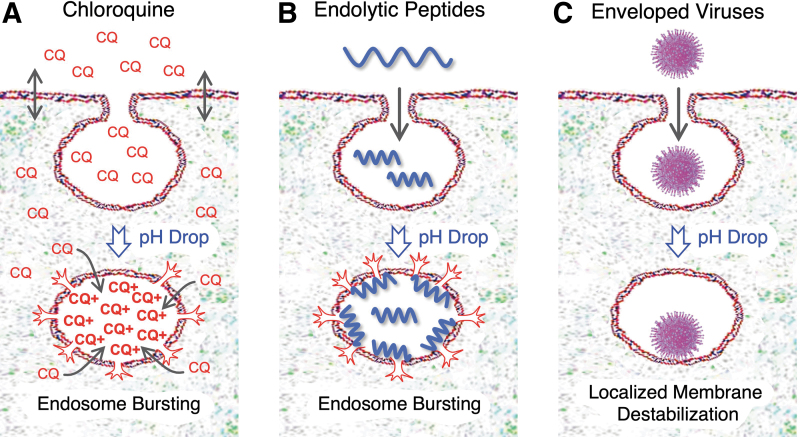FIG. 2.
Endosomal escape approaches. (A) Small-molecule endolytic agents, such as chloroquine (CQ), are membrane permeable, but become protonated, positively charged (CQ+), and trapped inside the low pH environment of an endosome, resulting in a 1,000-fold or more concentration increase that leads to endosomal bursting. (B) Endolytic peptides and polymers are often codelivered with RNA therapeutics in 10- to 30-fold molar excess and ultimately disrupt the endosomal lipid bilayer membrane, leading to endosomal bursting. (C) Enveloped viruses contain fusogenic peptide domains that are selectively activated in the low pH of endosomes, causing localized endosomal membrane disruption (not endosomal bursting). Adapted from the study by Dowdy [4].

